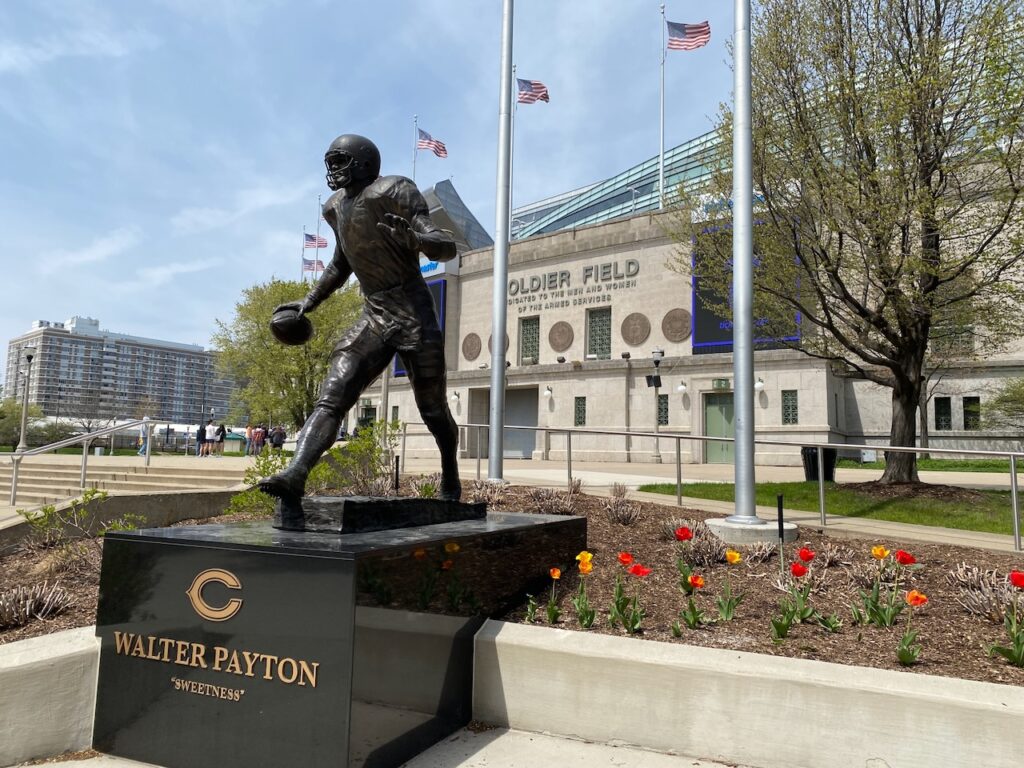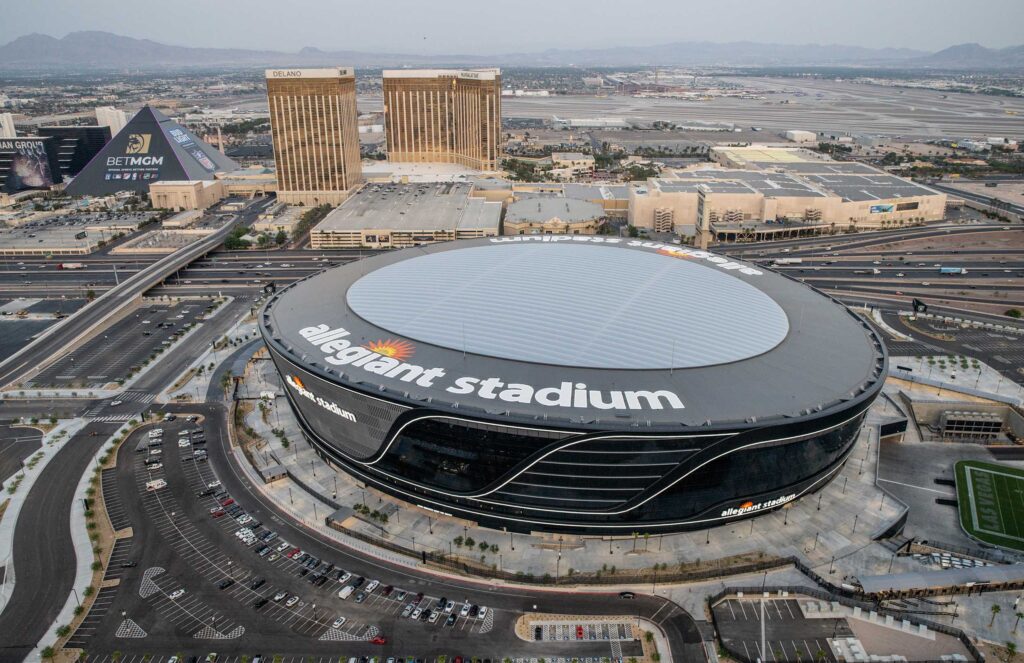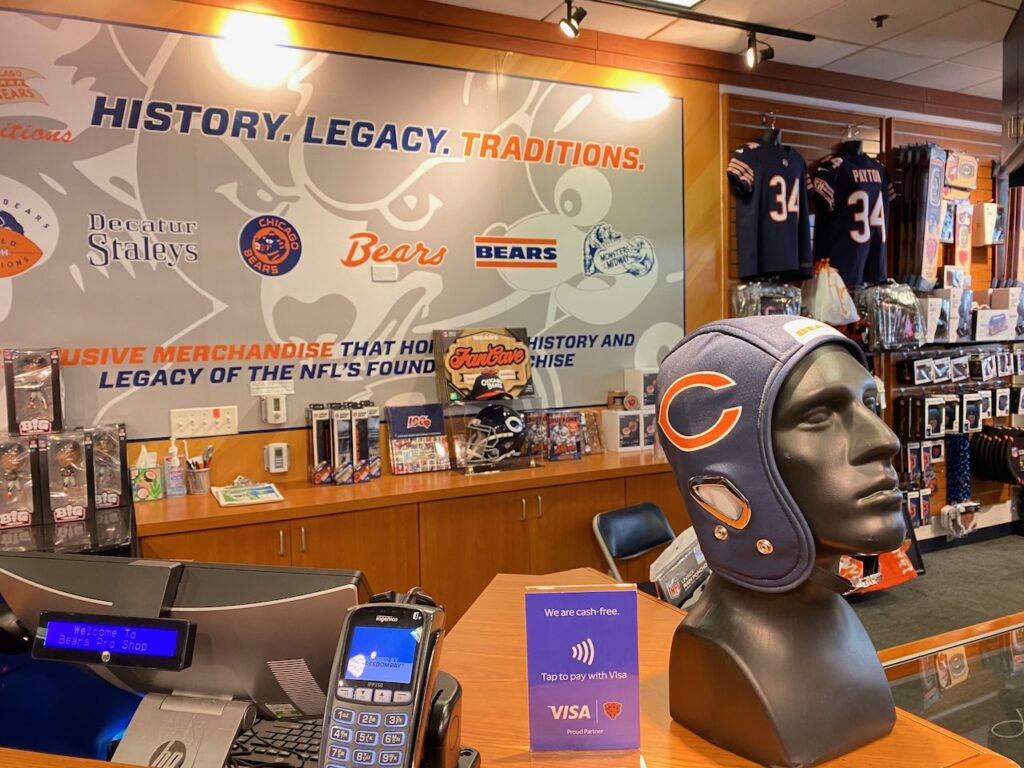NFL stadiums are architectural marvels that dominate city skylines and hold a special place in the hearts of fans.
However, these behemoths often sit idle for most of the year, typically hosting only 8-10 home games annually, without taking into account pre-season and post-season activities. This limited use raises important questions about their potential and impact on local communities. It’s important to discuss that we’re talking about the NFL, as the other leagues are significantly higher in typical home games (NBA and NHL at 41 and MLB at 82)
Let’s explore how these football venues can become year-round assets, with notable examples like Soldier Field in Chicago and Allegiant Stadium in Las Vegas.

Unlocking Stadium Potential
NFL stadiums have immense untapped potential beyond game days. The key is to view these spaces as community hubs rather than just sports venues. From hosting major concerts and international soccer matches to winter activities like sledding and ice skating, modern stadiums are showing how they can adapt to serve their communities year-round.
Innovative Repurposing Models
Many newer stadiums are designed from the ground up with multi-purpose use in mind. Features like retractable natural grass fields and climate-controlled environments allow these venues to host a wide range of events. Beyond NFL games, some stadiums have become premier destinations for concerts, college football, and large-scale conventions, leveraging their cities’ unique characteristics and tourism appeal.
Economic and Community Impact
The economic impact of increased stadium utilization can be significant. When stadiums are active year-round, they create a constant flow of visitors, which boosts local businesses. This approach has had a measurable positive impact on local economies, generating revenue and job opportunities for the surrounding communities.
Moreover, stadiums deeply rooted in a city’s history can continue to be sources of community pride. Integration with surrounding cultural attractions and recreational areas can make them focal points for both tourists and locals, contributing to the area’s overall appeal and quality of life.
Overcoming Challenges
Implementing diverse uses for NFL stadiums isn’t without challenges. The main barriers are often financial and logistical. Retrofitting these massive structures can be expensive, and there are concerns about wear and tear on playing surfaces. However, modern design solutions, such as advanced field management systems, are helping to address some of these traditional stadium limitations.

Let’s break down a quick-fire Q&A, which will be discussed at length in future articles as we look at individual markets.
- How can NFL stadiums maximize their potential during the remaining 300+ days of the year?
NFL stadiums can maximize their potential by diversifying their use. This could include hosting concerts, festivals, and other sporting events. They can also be used for community events, travelling exhibitions, or anything else that could see using a 65,000 seat facility. Most stadiums have found hidden revenue in creating year-round attractions like museums or tours. The key is to think creatively about how the space can serve the community beyond football games and provide the investment to install correctly without making it feel temporary.
- What innovative ideas or successful models have you seen for repurposing large sports venues during off-seasons?
Successful models include converting playing fields into temporary ice rinks or beach volleyball courts. Some venues have installed retractable roofs and modular seating to quickly adapt for different events. Others have integrated permanent facilities like restaurants, hotels, or conference centers into the stadium complex. European soccer stadiums often include public spaces, retail outlets, and even housing developments as part of their design.
- How does increased year-round utilization of NFL stadiums impact local economies and communities?
Increased utilization can significantly boost local economies by creating jobs, attracting tourists, and stimulating nearby businesses. It can also provide community benefits such as increased access to entertainment and cultural events. Year-round activity helps justify public investment in these facilities and can foster a sense of community pride and identity. Additionally, it can lead to infrastructure improvements in surrounding areas.
- What are the main challenges or barriers to implementing more diverse uses for NFL stadiums, and how can these be overcome?
Main challenges include high operational costs, potential wear and tear on facilities, and scheduling conflicts with the primary tenant (the NFL team). There may also be zoning restrictions or community concerns about increased traffic and noise. These can be overcome through careful planning, investment in adaptable infrastructure, and strong community engagement. Partnerships with local businesses and organizations can help share costs and risks.
- How is the role of NFL stadiums evolving in urban landscapes? How might they better serve as community hubs beyond just hosting football games?
In the future, NFL stadium redevelopments and new franchise builds are being proposed to be more about multi-use urban centers that seamlessly blend sports, entertainment, retail, and public services than the past stadium island in a sea of parking. They might incorporate green spaces, serve as transportation hubs, or house educational facilities. Some could become anchors for larger mixed-use developments.
The key will be integration with the surrounding urban fabric and responsiveness to community needs.

The Future of NFL Stadiums
Looking ahead, NFL stadiums are poised to evolve into multi-functional urban centers. They could become models of sustainable urban design, incorporating green spaces, renewable energy sources, and public transportation hubs. Some stadiums are already exemplifying these principles through their integration with city infrastructure and park systems.
There’s also a trend towards stadiums becoming centerpieces of entertainment districts.
As our cities continue to evolve, reimagining the role of NFL stadiums presents an exciting opportunity. By transforming these iconic structures into year-round destinations, we can create vibrant community spaces that offer value far beyond the gridiron. The future of NFL stadiums lies not just in the roar of the crowd on game day, but in the daily buzz of a community brought together by a shared space.
Stadiums like Soldier Field and Allegiant Stadium, each in their unique ways, are leading examples of how this vision can become a reality, benefiting both the teams and the communities they call home. As more NFL venues adopt these innovative approaches, we can expect to see stadiums playing an increasingly central role in urban life, serving as true community assets throughout the year.


